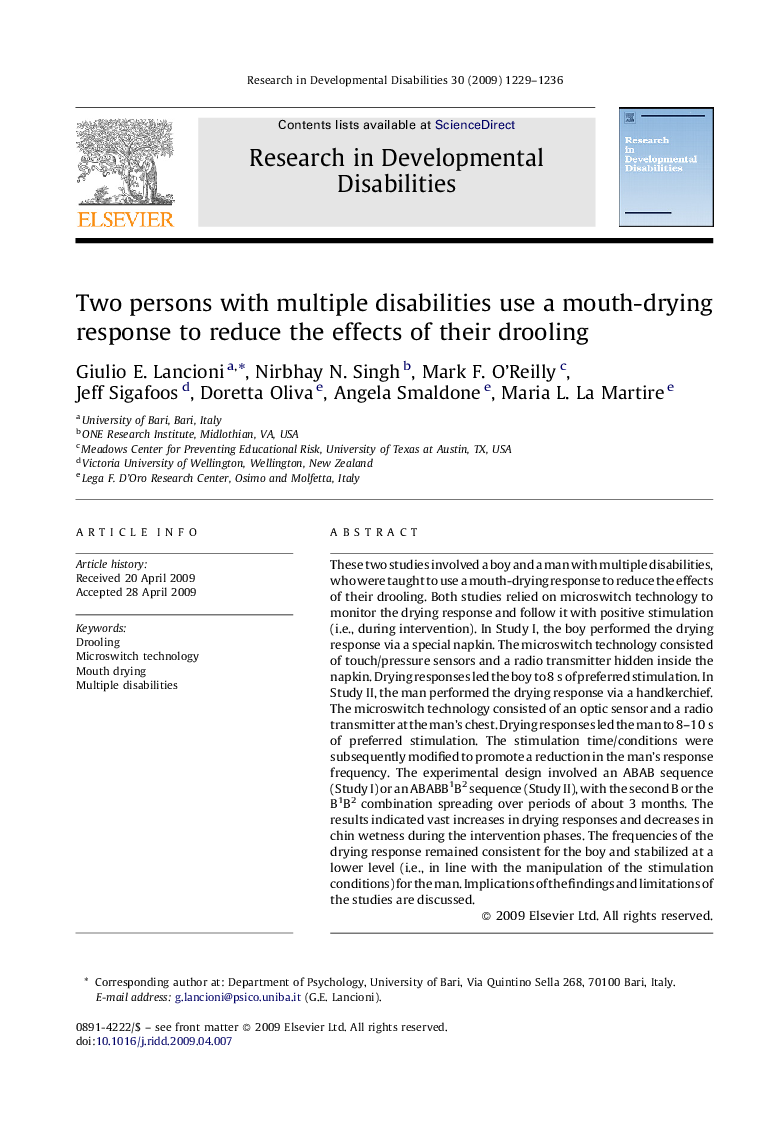| کد مقاله | کد نشریه | سال انتشار | مقاله انگلیسی | نسخه تمام متن |
|---|---|---|---|---|
| 372007 | 621951 | 2009 | 8 صفحه PDF | دانلود رایگان |

These two studies involved a boy and a man with multiple disabilities, who were taught to use a mouth-drying response to reduce the effects of their drooling. Both studies relied on microswitch technology to monitor the drying response and follow it with positive stimulation (i.e., during intervention). In Study I, the boy performed the drying response via a special napkin. The microswitch technology consisted of touch/pressure sensors and a radio transmitter hidden inside the napkin. Drying responses led the boy to 8 s of preferred stimulation. In Study II, the man performed the drying response via a handkerchief. The microswitch technology consisted of an optic sensor and a radio transmitter at the man's chest. Drying responses led the man to 8–10 s of preferred stimulation. The stimulation time/conditions were subsequently modified to promote a reduction in the man's response frequency. The experimental design involved an ABAB sequence (Study I) or an ABABB1B2 sequence (Study II), with the second B or the B1B2 combination spreading over periods of about 3 months. The results indicated vast increases in drying responses and decreases in chin wetness during the intervention phases. The frequencies of the drying response remained consistent for the boy and stabilized at a lower level (i.e., in line with the manipulation of the stimulation conditions) for the man. Implications of the findings and limitations of the studies are discussed.
Journal: Research in Developmental Disabilities - Volume 30, Issue 6, November–December 2009, Pages 1229–1236